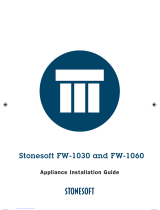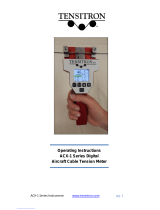
ACX500 Routers Quick Start Description
This Quick Start contains information you need to install and configure the ACX500
indoor router quickly. For complete installation instructions, see the ACX500 Universal
Access Router Hardware Guide at http://www.juniper.net/techpubs/.
WARNING: This Quick Start contains a summary of safety warnings in “Safety
Warnings” on page 21. For a complete list of warnings for this router, including
translations, see the ACX500 Universal Access Router Hardware Guide at
http://www.juniper.net/techpubs/.
The ACX Series Universal Access Routers are Ethernet-optimized mobile backhaul routers
that provide both switching and carrier-class Ethernet routing. The ACX Series routers
enable a wide range of business and residential applications and services, including
microwave cell site aggregation, mobile backhaul service cell site deployment, and service
provider or operator cell site deployment. The routers have high-density Ethernet
interfaces and high-capacity switching throughput.
An ACX Series router has a built-in Routing Engine and one Packet Forwarding Engine.
The Packet Forwarding Engine has one “pseudo” Flexible PIC Concentrator (FPC 0).
Because there is no switching fabric, the single Packet Forwarding Engine takes care of
packet forwarding.
The compact ACX500 indoor router is one rack unit (U; that is, 1.75 in., or 4.45 cm) tall.
Several routers can be stacked in a single floor-to-ceiling rack for increased port density
per unit of floor space. The chassis is a rigid sheet metal structure that houses all the
other router components. The chassis of the ACX500 indoor router measures 1.75 in.
(4.45 cm) high, 9.4 in. (24 cm) deep, and 17.5 in. (44.5 cm) wide. The outer edges of the
mounting brackets extend the width to 19.2 in. (48.7 cm) (with mounting brackets
attached). The chassis installs in standard 300-mm deep (or larger) enclosed cabinets,
19-in. equipment racks, or telco open-frame racks. The ACX500 indoor router is available
in both AC and DC models.
The ACX500 indoor router contains a total of 10 Gigabit Ethernet ports, eight of which
are labeled COMBO. At any point of time, you can use a maximum of six ports.
The ports labeled COMBO (combination ports) consist of four RJ-45 ports and four
Gigabit Ethernet SFP ports. Out of the four RJ-45 ports, three ports support PoE (PoE+
and PoE++).
The two ports that are not part of the COMBO ports are the Gigabit Ethernet SFP ports.
On the ACX500, the six ports that you can use at any point of time can be two Gigabit
Ethernet SFP ports (non-combination) and four ports from the COMBO ports.
3
ACX500 Routers Quick Start Description























